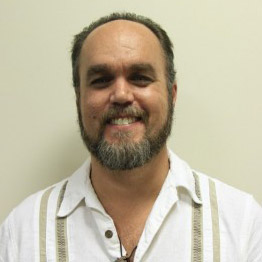 There are three ways people respond to challenges in life. Okay, I realize I am making a big generalization, but this has been my observation of three broad categories we all seem to fall into when things get tough. This way of looking at people grew out of my time in prison, which is hugely stressful, making it a good laboratory for studying people.
There are three ways people respond to challenges in life. Okay, I realize I am making a big generalization, but this has been my observation of three broad categories we all seem to fall into when things get tough. This way of looking at people grew out of my time in prison, which is hugely stressful, making it a good laboratory for studying people.
The first group will respond positively to challenge. They will assess the situation, see what changes they need to make, or what strategies they should adopt, and start working. These are the guys in prison that go to school, stop using drugs, alter the ways they think, or do whatever else they need to. In prison, I would guess they make up about 20 percent of the prison population, if that much.
The second group tends to get worse. They are the ones who learn more about crime or start new bad habits like drug use or violence. They often enter prison for less severe crimes and graduate to more serious ones. They don’t care about getting better at all. They are usually overwhelmed by life. They don’t really understand why they are there, and their stories usually involve a lot of blame for everyone but themselves. They make up about 75 percent of the population, from my experience.
The third group is the smallest, totaling maybe 5 percent or less. They are the ones who could go either way. I realized this group existed when I worked as a teacher. For nearly 15 years, I taught everything from the alphabet to vocational trades, and in that setting I saw the difference I could make in pushing someone towards one of the other categories.
Just a few caveats: first, most of us will shift around in these three groups, but tend towards improving or deteriorating; next, it isn’t easy to predict which way someone is going to react, so we shouldn’t be quick to categorize; and lastly, I don’t believe these categories reflect morality or character, but our reactions to adversity are based on our fundamental makeup and our upbringing, combined with our environment. Most importantly, none of these are foregone conclusions; if we can shift the environment we can change the percentages as well.
Since my release I have seen how the same categories apply here in the free world too, and we can use them in evaluating not only people, but also programs for juvenile offenders. In some ways it is triage. Some kids are going to do what they need to do on their own. Some are going to do wrong no matter what. We can safely deal with the first group in ways that support their chances of success, which means giving them the opportunity to get right back on track. On the other side, we have to be careful with the second group. They are not a good risk for certain programs, and will require the most intervention and monitoring. They can be helped; it just takes a lot of work.
My biggest interest is in the third group. With less effort they can be helped, and a lot of our influence can be decided on the front end. It is pretty clear for instance that locking up kids is an ineffective way to influence their behavior in a direction we want. Incarceration tends to push people towards the “getting worse” group. Whether it is trauma, stigmatization, loss of family connections, contact with more serious offenders, gang involvement, or a myriad of other factors, being behind bars is not good for kids.
A proactive approach that offers support in education, family connection, safety and restoration after a crime, for example, will push these kids in the direction we want them to go. As tempting as it is to want to push kids who commit crimes out of sight and punish them, the most effective strategy is to engage them in a way that doesn’t stigmatize or further marginalize them. They are going to be affected by what we as a society do; the question is in what way. Let’s use a little logic to get more of what we want.




























